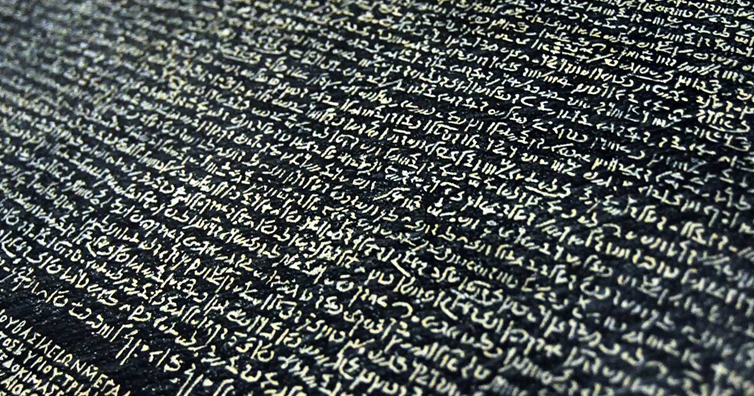The Rosetta stone is one of the most precious and valuable treasures of the British museum. This stone was the key in understanding Egyptian Hieroglyphics.
Until it was discovered and acquired by Napoleon, no-one in the modern age had a clue about how Egyptian writing worked. The most popular idea was that they were purely ideographic, with each drawing representing a concept.
But then the Rosetta stone appeared: (the article continues after the ad)

The Rosetta stone was a part of a temple that was likely demolished when a Roman emperor ordered all non-Christian temples to be closed. It was buried for centuries until French soldiers found it and one of them realised what its significance might be. The same text in 3 languages: Hieroglyphics, Demotic and, most importantly, ancient Greek. These gave scientists a way in, a way to crack the code.
But translation wasn’t easy: it took scholars twenty years to work it out. At the end, they finally got it and that’s why today we are able to translate hieroglyphics.
There is one question that very few people ask, though: what’s actually on the Rosetta Stone? What mysteries of ancient Egyptian life did it reveal? Is it about kings and slaves? About a royal battle? What does it say?
Well, this precious piece of history is actually… an ancient bureaucratic paper! The Rosetta Stone is all about a royal cult being granted certain favours including tax exemption. It’s essentially, Ancient Egyptian tax paperwork.
If you like what you read, then you will definitely love this one: What’s Really Inside The Great Pyramid Of Giza?


Photo: Fluent in 3 months
Widget not in any sidebars




